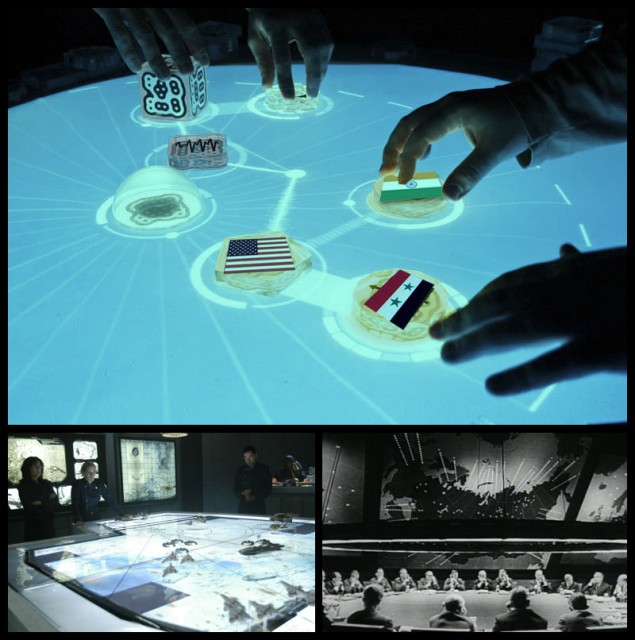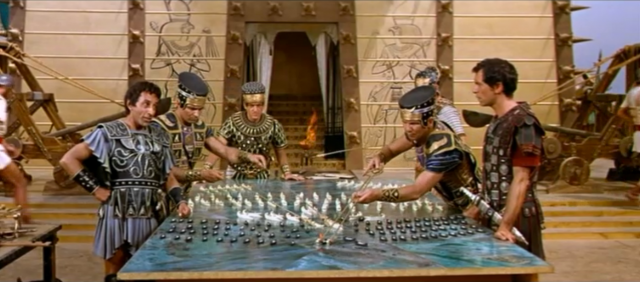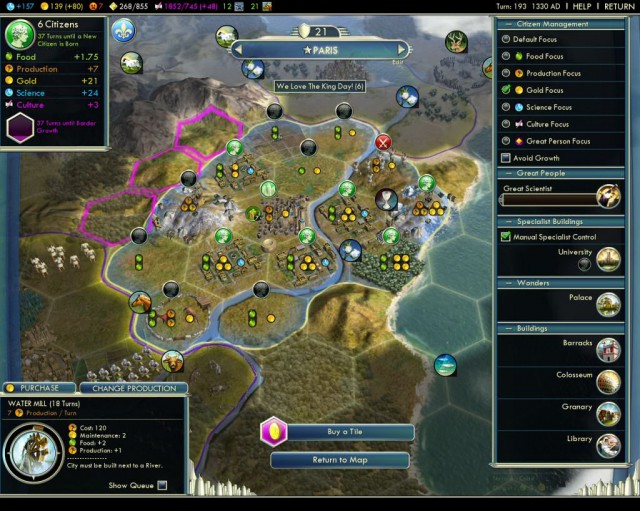The creative applications network features an inspiring article about visualizing complex information: the psychoeconomic war room table. Why is this relevant to this research? Let us go along, setting aside the kitchen table, a crisis location and the NASA command center, and let us take a closer look at some of the images of war rooms (I’ve boldly copied and insered below) which helps me make a statement about handling intentions.

A war room table inserted the lower right, resembles todays “precede-and-decide” meeting conditions. A large table, seated participants and -if lucky- a big screen or whiteboard. The lower left insert resembles a battle emulator, with simular functionalities like the old school simulator below.

Biggest differences to me? The number of people involved, the type of intentions (tactical vs strategic, field vs policy), the ways of neighbour interaction, feedback, simple rules (i.e. traces/ tracks). I wonder which setting will be better in supporting constructive conflict as opposed to destructive conflict.
Regarding these types of conflict, the Dutch documentary ‘sta me bij’, shows a 60 minute example about cooperation (and mutual trust) as a driver versus ego (and personal responsibility) as a driver.
Let’s also take a look at the next image, a screenshot of a computer game called Civilization.

Why is this relevant? Because it helps us recognise some key-characteristics valuable to ‘visualizing the understanding of decision making’:
- The game seems to remove Ego’s out of the equation, using metaphores instead of persones to compete with.
- The game seems to be both disarming and motivational at the same time.
- It seems to be able to force issues at hand.
- The game is a multiplayer game, offering shared perspective besides a / parallel to a personal view.
Such characteristics are helpful if we want to perform better in an envisioned world with an interdisciplinary approach, an ‘interstakeholder’ approach, a federal approach, a transgressing approach, a heritable approach when solving complex matters.
When people are in meetings, there’s a number of activities they seem to prefer:
- … Hiding some intentions, making personal notes or for reporting to the ‘organisational backbone’;
- … Sharing some intentions, by dialogue or storytelling or using flipovers or other media;
- … Overthinking or evolving some intentions, by scribbling and intimate drawings; and
- … Saving, re-opening, re-reading and re-writing some intentions…
Feel free to try and recognize these activities next time you’re in a meeting.
A final thought. When comparing cooperation and competition, it occured to me that (1) ants have no ego’s, (2) ants are tollerant to their own, (3) ants use temporal cooperation, especially when competing. Check out this small ant defending his bigger friend and their food (source).

Who needs a war room? As Steven Berlin Johnson suggests in his book Emergence: Emergence can occur when there is neighbour interaction, pattern recognition, feedback, and indirect control. Don’t have a copy? Not to worry, the book is explained at this post.
So, inspired by the writers of a new book called ‘Vision in Design’:
Accept complexity, go straight through it – no work around – and reduce into helpful interactions. Take your responsibility as a designer.